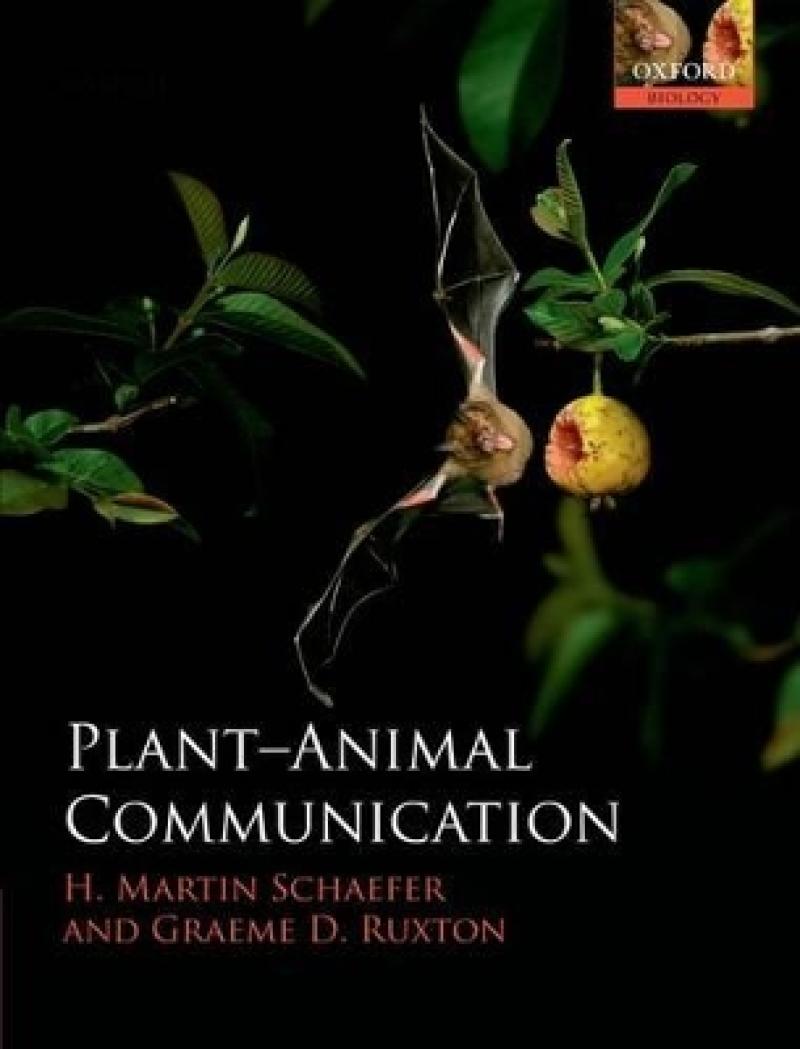Communication is an essential factor underpinning the interactions between species and the structure of their communities. Plant-animal interactions are particularly diverse due to the complex nature of their mutualistic and antagonistic relationships. However the evolution of communication and the underlying mechanisms responsible remain poorly understood.
Plant-Animal Communication is a timely summary of the latest research and ideas on the ecological and evolutionary foundations of communication between plants and animals, including discussions of fundamental concepts such as deception, reliability, and camouflage. It introduces how the sensory world of animals shapes the various modes of communication employed, laying out the basics of vision, scent, acoustic, and gustatory communication. Subsequent chapters discuss how plants communicate in these sensory modes to attract animals to facilitate seed dispersal, pollination, and carnivory, and how they communicate to defend themselves against herbivores. Potential avenues for productive theoretical and empirical research are clearly identified, and suggestions for novel empirical approaches to the study of communication in general are outlined.
Les mer
A summary of the diverse communication systems between plants and animals. This book explains the theoretical foundations of communication and applies them to the diverse processes in which plants can act as prey or predators of animals. It lays out fundamental concepts such as deception, reliability, and camouflage and explains their evolution.
Les mer
Preface ; 1. Communication and the Evolution of Plant-Animal Interactions ; 2. Animal Sensory Ecology and Plant Biochemistry ; 3. Animals as Seed Dispersers ; 4. Visual Communication in Fleshy Fruits ; 5. Evolutionary Ecology of Non-Visual Fruit Traits ; 6. Flower Signals and Pollination ; 7. The Potential for Leaf Colouration to Communicate to Animals ; 8. Plant Crypsis, Aposematism, and Mimicry ; 9. Chemical Communication by Plants about Herbivores ; 10. Sensory Aspects of Carnivorous Plants ; 11. Final Thoughts ; Glossary ; References ; Index
Les mer
PlantAnimal Communication is a fascinating book, valuable to students and academics alike. It shows just how exciting studying communication is and why, despite decades of research, there is much left to discover and understand.
Les mer
Provides a theoretical underpinning for the evolutionary ecology of plant-animal communication, adopting a comparative approach
Focuses on plant herbivory, seed dispersal, pollination, and the predation of animals by carnivorous plants
Investigates the functional and sensory aspects of olfactory, visual, and acoustic communication in a wide range of plants and animals
Addresses unsolved questions and highlights opportunities for future theoretical and empirical research
Les mer
Martin Schaefer is Associate Professor in Evolutionary Biology and Ecology at the University of Freiburg. His main research interests are the sensory ecology of plant-animal interactions in the three fields covered in this book, seed dispersal, plant defence and carnivory. He uses an integrative approach of combining biochemical analyses with theoretical modelling and experimental work. His work focuses on the behavioural ecology of vertebrates and invertebrates
interacting with plants and on the plants themselves. His background in plant physiology and biochemistry will help to describe the proximate mechanisms involved in plant signalling. Graeme Ruxton has
co-authored two previous monographs (Living in Groups, 2002, Oxford University Press; Avoiding attack: the evolutionary ecology of crypsis, warning signals and mimicry, 2004, Oxford University Press). He is Professor of Theoretical Ecology at the University of Glasgow. His main research interests are in sensory ecology and how one species can exploit the senses of another. This research is carried out through mathematical modelling combined with laboratory and field studies. Graeme's
background in the sensory ecology of animal-animal predation allow this book to utilise the extensive theoretical developments associate with this field, and translate these into plant-animal interactions.
Les mer
Provides a theoretical underpinning for the evolutionary ecology of plant-animal communication, adopting a comparative approach
Focuses on plant herbivory, seed dispersal, pollination, and the predation of animals by carnivorous plants
Investigates the functional and sensory aspects of olfactory, visual, and acoustic communication in a wide range of plants and animals
Addresses unsolved questions and highlights opportunities for future theoretical and empirical research
Les mer
Produktdetaljer
ISBN
9780199563593
Publisert
2011
Utgiver
Vendor
Oxford University Press
Vekt
674 gr
Høyde
247 mm
Bredde
191 mm
Dybde
16 mm
Aldersnivå
UP, 05
Språk
Product language
Engelsk
Format
Product format
Heftet
Antall sider
296
